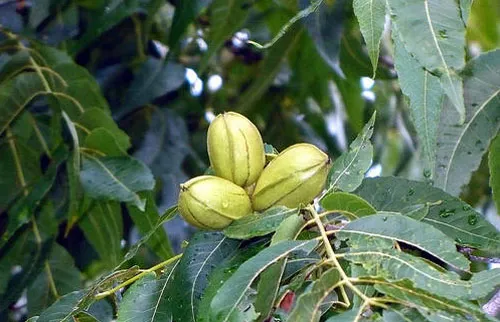| Propagation | Scion & Rootstock Selection | Orchard Management | Deficiencies & Pests | Processing & Storage | Reviewers & Credits | References & Links |

Although pecan trees have existed in California for more than a century, the first commercial orchard in California was established in the mid 1970s in the Clovis area. Since then, pecan production has spread throughout the central valley, but it is not nearly as widely cultivated as other nut crops (almond, pistachio and walnut) in California.

Trees are monoecious (male and female flowers on the same tree). Male flowers are located on 4-5 inch long catkins. Female flowers are small, yellowish-green, and grow on spikes at the tips of shoots. Male and female flowers are dichogamous and mature at different times. Some cultivars are protandrous with male flowers that mature before females, and some are protogynous with female flowers that mature before males. Because pecan is wind pollinated, at least two different cultivars should be planted in close proximity to ensure adequate fruit set (Wells and Conner, 2012). Pecan trees alternate bear, oscillating between heavy and light crop production across years (Vossen and Silver, undated). The degree of alternation can be managed to some extent with proper culture and cultivar selection. Trees can bear fruit for up to 300 years (Gilman and Watson, 1993).

